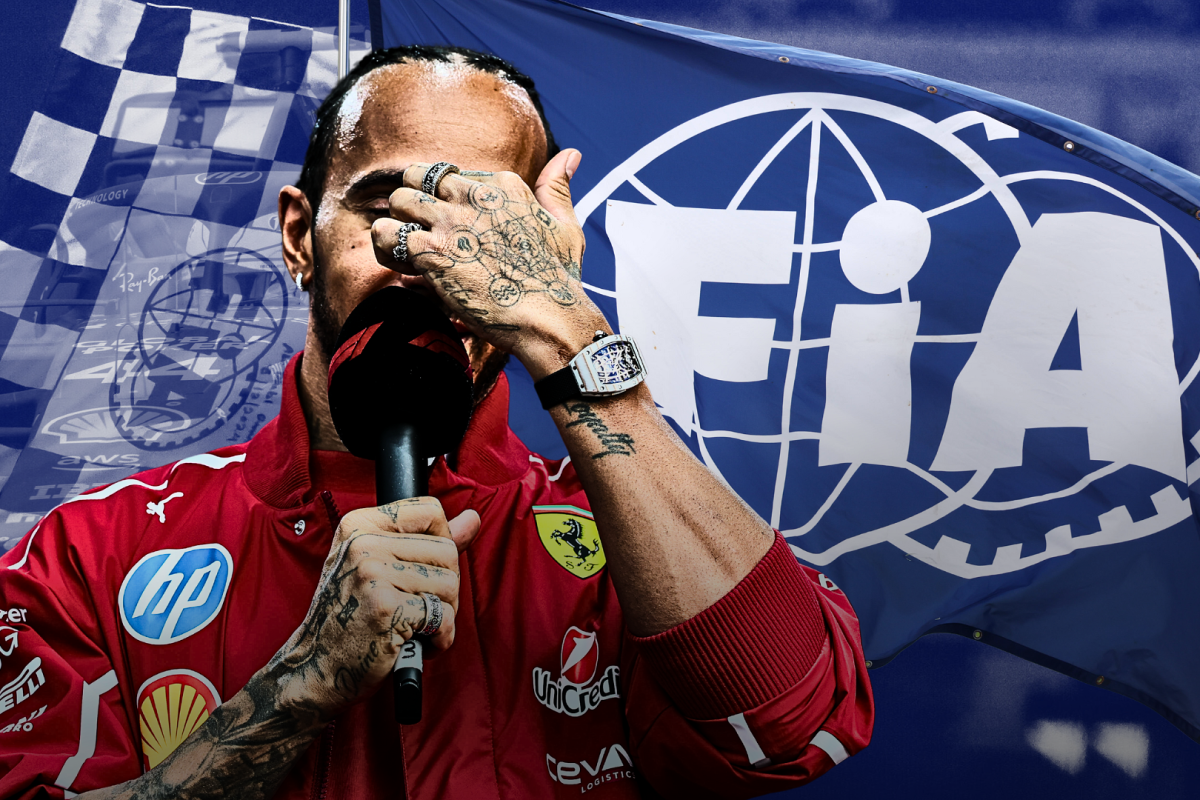The Formula 1 world has been rocked by one of the most dramatic turnarounds of the 2025 season as both Lewis Hamilton and Charles Leclerc were disqualified from the Chinese Grand Prix. What started as a weekend full of promise for Ferrari — with Hamilton showing improving pace and Leclerc fighting to a well-earned fifth place — quickly descended into chaos after the FIA uncovered new evidence of two separate technical violations.

Ferrari, a team known for precision and excellence, was left reeling as the FIA launched back-to-back investigations that resulted in an unprecedented double disqualification. Fans, pundits, and rival teams alike are still in disbelief, wondering how such costly mistakes could have slipped through the cracks at one of the sport’s top teams.
Let’s break down exactly what went wrong — and what this means for Ferrari and its star drivers moving forward.
Shortly after the checkered flag waved at the Shanghai International Circuit, Lewis Hamilton’s car was called in for a post-race technical inspection. The focus of the investigation? The car’s floor plank, an essential component that helps ensure teams respect the minimum ride height regulations designed to promote fairness and safety.
FIA Technical Delegate Jo Bauer’s measurements revealed that the rear skid of Hamilton’s floor had worn below the required 9-millimeter thickness. Specifically, readings showed 8.6mm on the left, 8.6mm on the center line, and 8.5mm on the right — each below the legal limit. There was no ambiguity, no room for interpretation: Hamilton’s car was in clear violation of Article 3.5.9 of the technical regulations.

Ferrari acknowledged the finding immediately. Team representatives admitted the error and accepted that there were no mitigating circumstances. It was a straightforward miscalculation — and the FIA responded swiftly with an automatic disqualification.
But the nightmare wasn’t over for Ferrari. Mere moments after Hamilton’s penalty was confirmed, Charles Leclerc’s car was also flagged. This time, the issue was unrelated to the floor; it was about the car’s weight.
In Formula 1, the minimum weight for cars after the race, once fuel is drained, is 798 kilograms. Leclerc’s car weighed in at 797 kilograms. The problem stemmed from Ferrari’s decision to replace Leclerc’s front wing mid-race after he suffered damage battling through traffic. While the spare wing was heavier — giving the team hope they’d be safe on weight — they failed to account for higher-than-expected fuel consumption in a race that lacked a safety car period. The result? The car ran underweight throughout the race, an infraction that brings an automatic disqualification.

Ferrari’s team principal, Frédéric Vasseur, faced the media after the double blow, calling it “one of the most painful days” in his leadership so far. He admitted that these were errors of judgment, not complex engineering gambles or risky experiments. “At this level, these mistakes are unacceptable,” Vasseur said. He promised a full internal review to ensure tighter control over technical compliance and race strategy in future weekends.
Hamilton, despite the bitter disappointment, remained composed. In his post-race statement, he acknowledged the frustration but took comfort in the car’s pace and balance — signs that Ferrari’s development direction is working. “We had good speed this weekend. I felt much more connected to the car compared to Australia,” he said. Hamilton expressed confidence that the team would bounce back stronger.
Leclerc, however, was visibly more frustrated. He admitted he felt the car was unusually light during the final stint but didn’t expect it to fall under the weight limit. “We followed all protocols when swapping out the front wing, but the fuel consumption caught us out. It’s a tough lesson, but one we need to learn from fast,” he said.
The double disqualification not only stripped Ferrari of what could have been a valuable haul of points but also reshuffled the standings. McLaren and Mercedes benefited immediately. Esteban Ocon vaulted to fifth, Lance Stroll took ninth, and Carlos Sainz snuck into the final points position.
For Ferrari, the road ahead is now steeper than ever. They’ve shown flashes of brilliance — Hamilton’s increasing comfort in the car and Leclerc’s tenacity in race conditions — but raw speed isn’t enough in a championship this tight. Precision, attention to detail, and perfect execution are just as important.
These disqualifications serve as a brutal reminder that Formula 1 is not just won on the track; it’s won behind the scenes in the garage, in the strategy rooms, and during scrutineering. The margin for error is razor-thin. Every millimeter matters. Every gram counts.
Looking ahead, Ferrari faces immense pressure. Vasseur’s leadership will be tested as the team works to shore up its operational weaknesses. The question on everyone’s mind: Can they recover quickly enough to remain in the fight against Red Bull, McLaren, and Mercedes in one of the most competitive seasons in recent memory?
What do you think? Is this just a bad weekend for Ferrari, or does it reveal deeper issues within the team? Can Hamilton and Leclerc still believe in this project, or will these setbacks derail their championship ambitions?
One thing’s certain: The 2025 Formula 1 season just became even more unpredictable — and fans won’t want to miss what comes next.
